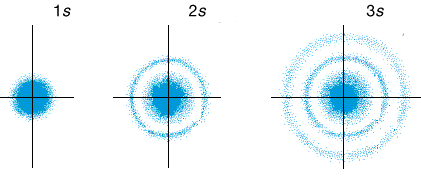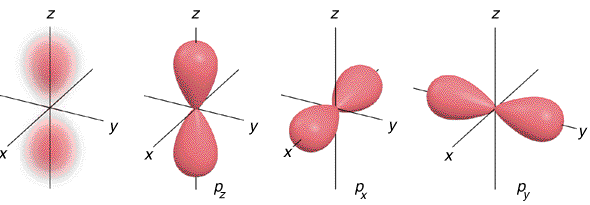Online Introductory Chemistry
Subshell order of filling, numbers of subshells, orbital population, electron spin, magnetism
|
Orbitals, s, p, d, f and average distance from the nucleus |
|
Orbitals are the regions of space occupied by electrons in atoms. The shapes and volumes of space are different for each type of orbital. The electrons are confined to specific shaped spaces around the nucleus. The electrons are not on the surface of these shapes. The electrons are moving inside the volume marked out by the shape.
|
|
Number of orbitals in a shell |
|
The number of each type of orbital has a mathematical origin. You need to know only the results of the math.
Notice that the number of orbitals increases by "2" in going from one type to another. The capacity for electrons increases by "4" at the same time. Exercise: How many "g" orbitals would you predict? Answer: There should be 9 orbitals and they could hold a total of 18 electrons.
|
|
Number of electrons in an orbital and electron spin |
|
Every orbital can only hold two electrons. This is linked to the magnetic character of electrons. The electrons act as though they are spinning charged particles. There are two spin directions that match the two magnetic fields created by electrons. There is a spin up field and a spin down field. Commonly the two magnetic fields and spin types are indicated by arrows. An up arrow for spin up and a down arrow for spin down. The pairing of the magnetic fields of two electrons cancels out the fields and sets the limit on the population of an orbital at two.
Atoms with all the electron spins paired have no magnetic character. An atom with unpaired electrons shows magnetic properties. This is the origin of the magnetic behavior of iron and nickel for example. This magnetic property gives us a way to know how the electrons are arranged in atoms. Particles with unpaired electrons are called as "free radicals". Free radicals have been linked to the aging process, mutations in DNA, and cancer.
|
|
Exercise: How many electrons can fit into all of the 3p subshell orbitals? Click here for answer. |

